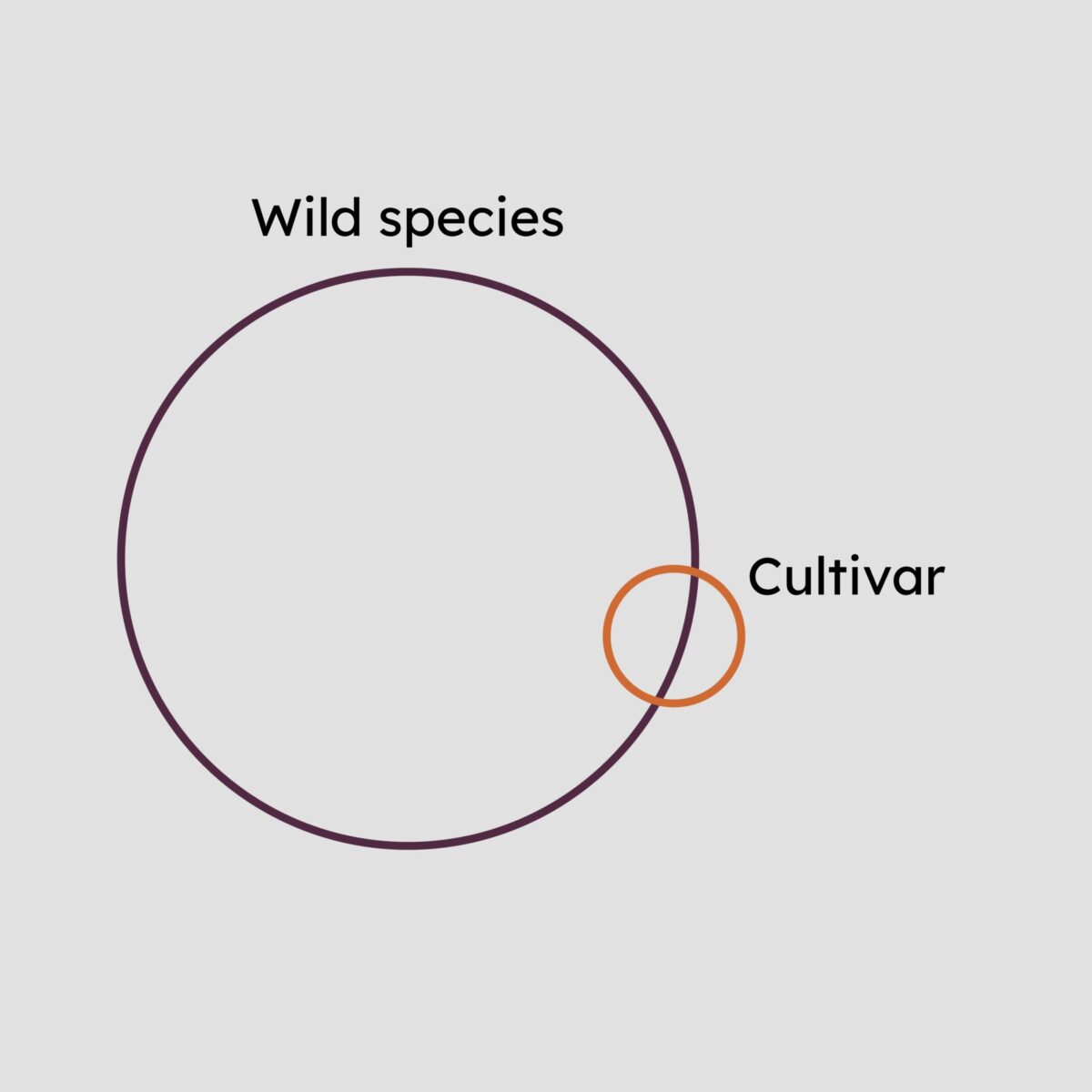In the world of cultivated tradescantias, there are some plants which people refer to as “wild type”. This is a pretty ambiguous term that doesn’t do much to help identify plants – the best approach in these cases is to use cultivar names instead. To understand why, we first need to understand how a species is defined.
What is a species?
A species is a population of wild, naturally-occurring organisms (for our purposes, plants). Deciding exactly where to draw the boundaries of one species from another is something scientists have spent centuries working on, and there’s still no simple answer. But for our purposes here, all that matters is that species are defined by scientists based on how they occur in nature.
Any species will have variation between members of the population. Just like no two humans have exactly the same height or skin colour, no two plants of a species have exactly the same features. There is always natural variation in traits like leaf size and shape, growth habit, flower colours, and many others. The definition of the wild species includes all this variation between individuals. Just like the definition of human includes all the different possible heights and skin colours (and every other trait) that humans can have.
Defining cultivars
Whereas a species is defined by having a range of natural variation, a cultivar is defined by being very consistent. Often a cultivar is a single clone, which means that all individuals of that cultivar are genetically identical. Even if that’s not the case (for example, a cultivar which has been selectively bred and reproduces true from seed), the features that make the cultivar distinctive have to be stable and uniform for all plants that belong to it. If one plant has flowers that are a different colour from the others, it can’t be considered to belong to the same cultivar – even though it still belongs to the same species.
To help illustrate this, here are some simple diagrams. A wild species is shown by a large circle, because it encompasses lots of variation. Different individual plants belong to different points in that circle, but they all fit the broad definition of the wild species. In comparison, a cultivar is a much smaller circle. There’s very little variation between individuals, and if they don’t fit in that small circle they don’t belong to the cultivar.
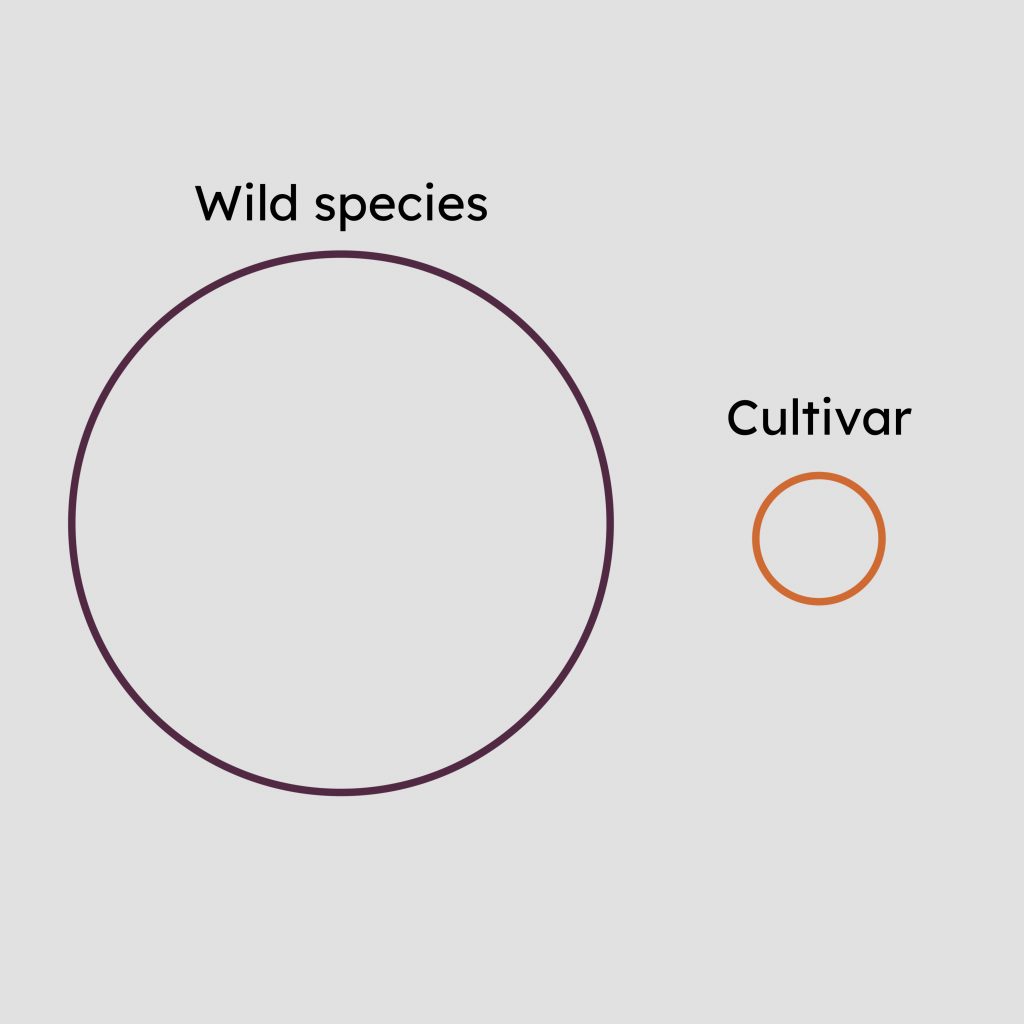
Some cultivars are clearly very different from the wild species they originated from. For example, Tradescantia cerinthoides ‘Nanouk’ has creamy-pink variegated leaves. The wild species Tradescantia cerinthoides always has solid green leaves, so ‘Nanouk’ is very obviously different.
Others have some traits which overlap with the wild species, or are only just outside it. For example, the foliage of Tradescantia pallida ‘Ocampo White’ is fairly typical for the wild species Tradescantia pallida. It’s only the white flowers which are clearly distinct from the species’ usual pink blooms.
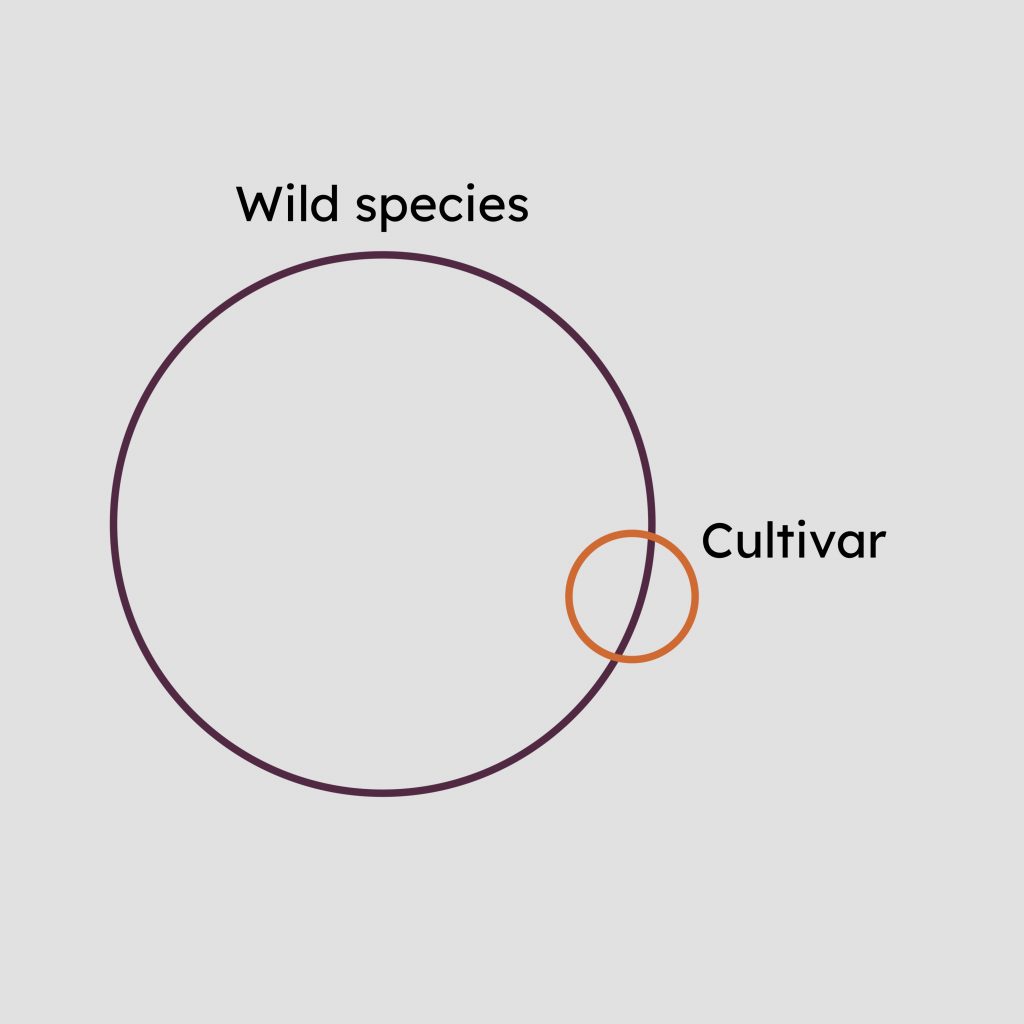
What is a wild type?
There are also cultivars whose characteristics fit entirely within the natural variation of the species. These cultivars are often clones of a single wild-collected specimen, but they could also be selectively bred or sport mutations. Take Tradescantia zebrina ‘Minima’. It’s a creeping plant with purplish-to-greenish foliage, and two silver stripes on each leaf. All of those features are typical for the entire wild population of Tradescantia zebrina.
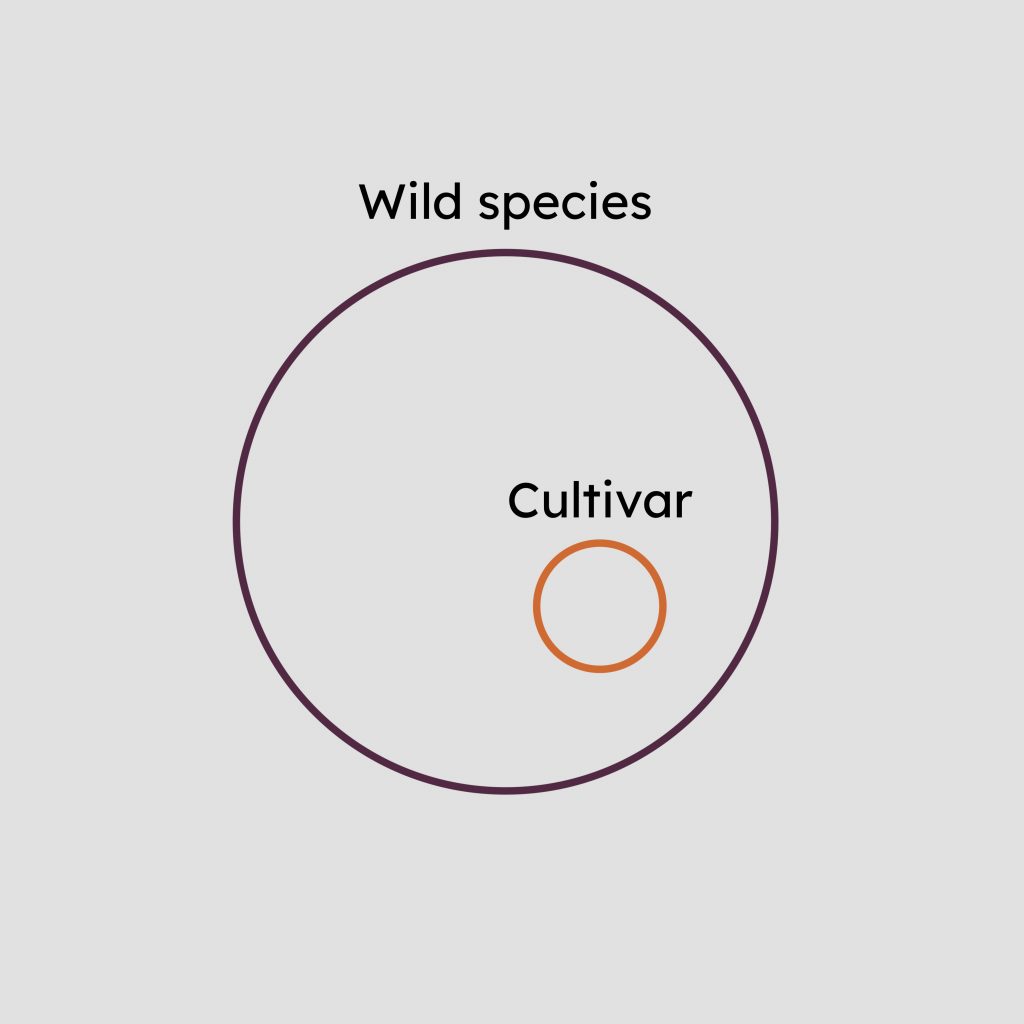
But ‘Minima’ is still treated as a cultivar. Because although its characteristics fit within the variation of the wild species, the name ‘Minima’ defines a smaller and more precise set. All ‘Minima’ plants have exactly the same growth habit and colours (not accounting for variation in different conditions), because they’re all clones of a single genetic individual.
And ‘Minima’ isn’t the only T. zebrina cultivar that fits within the definition of the wild species – there are many others.
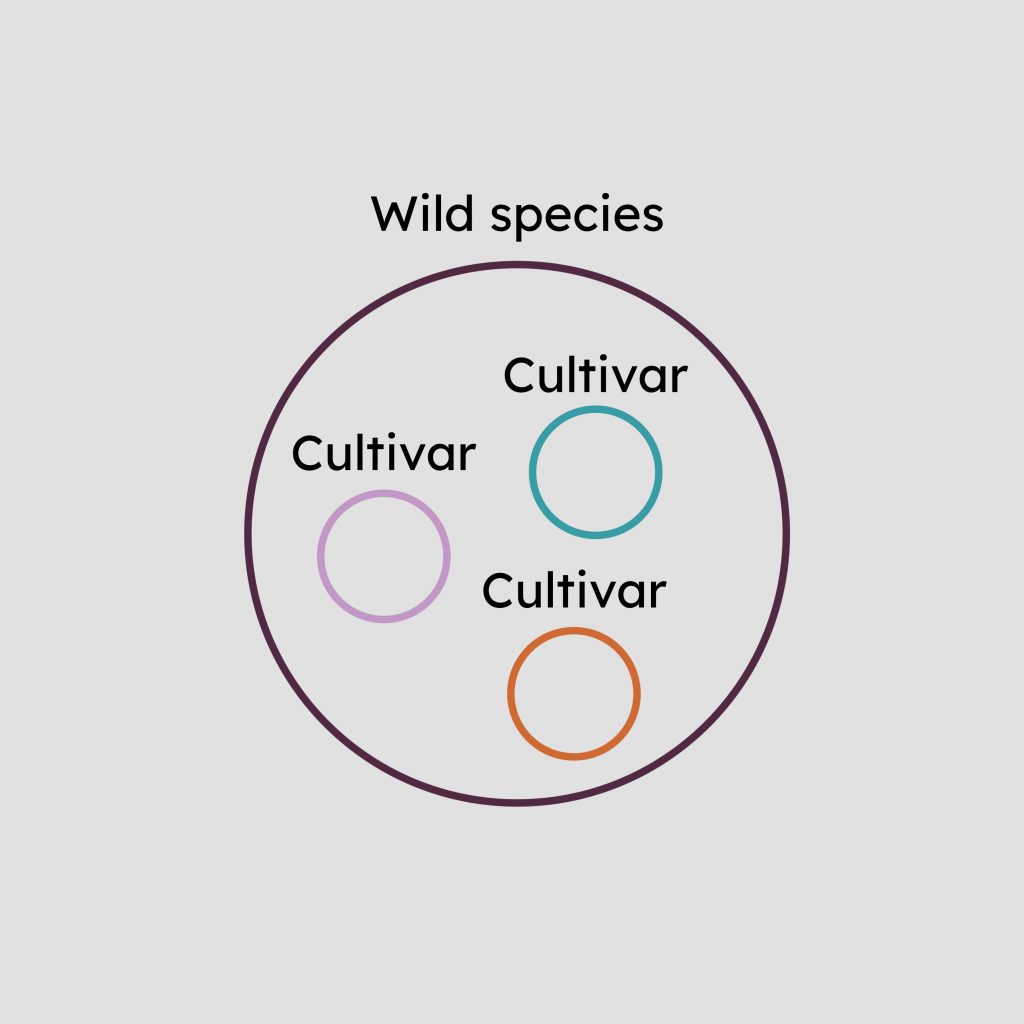
Sometimes people refer to ‘Minima’, or other cultivars which fit the wild definition of the species, as “the wild type”. In a way, this is true – they are all types of the wild species. But it’s not a helpful way of describing cultivars, because it doesn’t actually identify them uniquely. Any of the cultivars in the diagram above could be referred to as “the wild type”, but they’re all completely distinct from each other. This is why it’s still useful to have cultivar names to identify each of them.
Species with just one cultivar
When there are multiple “wild type” cultivars, it’s fairly easy to see that they need to be named and treated as distinct from each other, in order to identify them. It becomes even more tricky when there are fewer cultivars belonging to a certain species.
Tradescantia chrysophylla ‘Baby Bunny Bellies’ is a creeping plant with velvety soft leaves and small white flowers. In this, it perfectly matches the definition of the species T. chrysophylla. It’s also the only cultivar of that species that currently exists. The species itself was only described by science a few years ago (Pellegrini, 2017), so it hasn’t been researched much yet. It’s hard to know exactly how much variation there is in the wild species, compared to the cultivar.
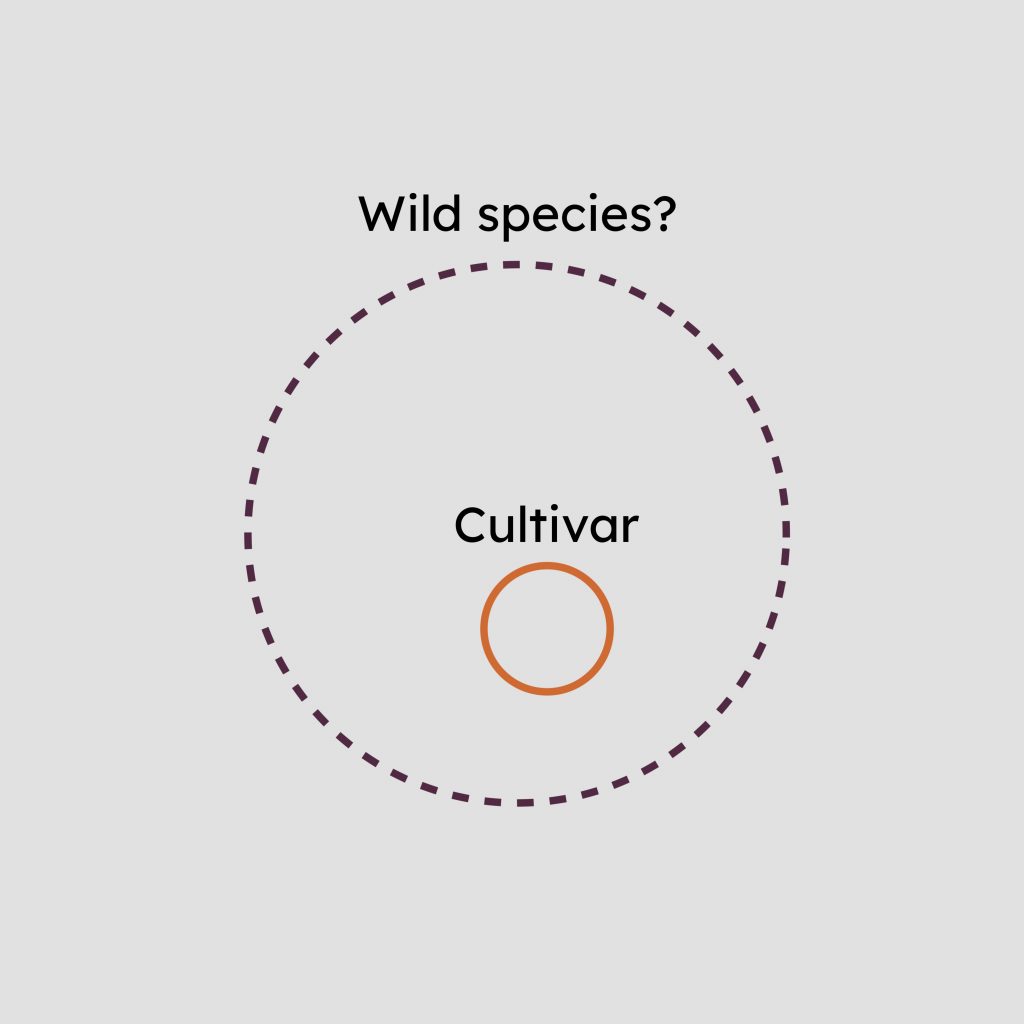
In a case like this, there are reasonable arguments both for and against treating ‘Baby Bunny Bellies’ as a cultivar. We could just say that it’s the wild species T. chrysophylla and that’s all – it certainly fits the definition of the species and there are no other cultivars to distinguish it from.
But the plant is a single clone, which means every individual is genetically identical. So it will show less variation than the full population of the wild species (even if we don’t know much about the wild species at this point). It’s quite possible that a future wild-collected specimen might be found that’s clearly different to ‘Baby Bunny Bellies’, and become a unique cultivar of its own. If that happens, we’d need names to distinguish the two clones from each other. So the safest and most “future-proof” choice is to treat the common clone as a specific cultivar, even though it’s currently the only one of its species.
The term “wild type” is generally ambiguous, and not a helpful way of identifying plants. If we’re referring to the wild species as a whole – with all its variation – we can simply call it the species. And if we’re referring to a particular clone or a cultivated population with specific traits, then we should use cultivar names to identify them.
Found this article helpful?
If you want more great resources like this, you can help me keep making them with a regular payment on Patreon.
References
Pellegrini, M.O.O., Forzza, R.C., Sakuragui, C.M. (2017). Novelties in Brazilian Tradescantia L. (Commelinaceae). PhytoKeys, 80, 1-31. doi:10.3897/phytokeys.80.12232. Open access link.

